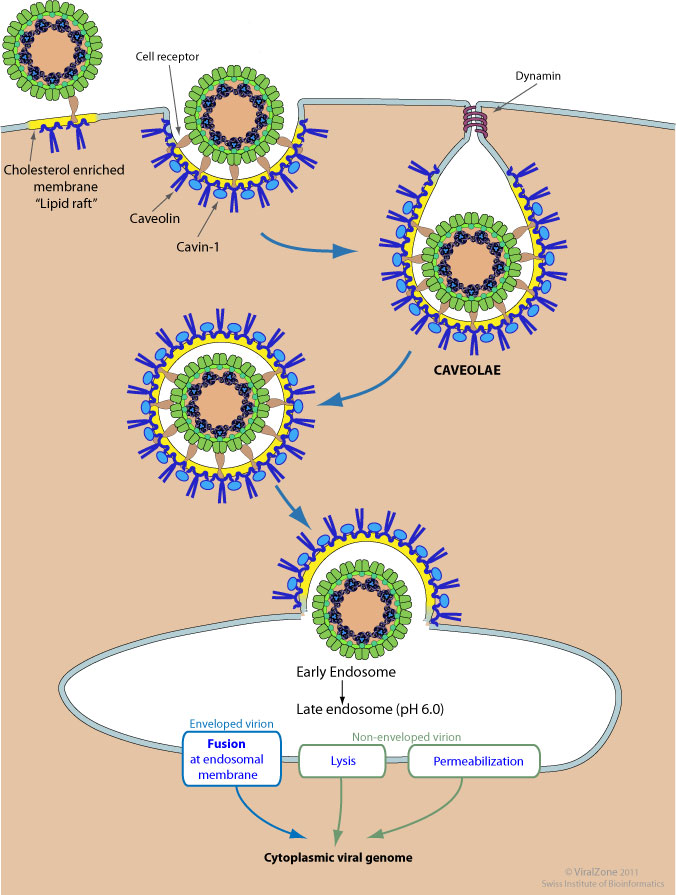Caveolin-mediated endocytosis of virus by host (kw:KW-1166)

Virus internalization by the host cell via caveolae, which are specialized lipid rafts that form 50-70 nm flask-shaped invaginations of the plasma membrane. Caveolins form the structural backbone of caveolae (CAV1/caveolin-1 (AF095593:9606) and CAV2/caveolin-2 ; CAV3/caveolin-3 in muscle cells). Internalization via caveolae is not a constitutive process but only occurs upon cell stimulation. Internalized viruses bound to their host cell receptor are delivered to the early endosome. It has been first thought that bound viruses were first taken to pH-neutral organelles in the
cytoplasm called caveosomes and finally delivered to the ER, but this has been refuted in  . Caveolae represent a low capacity but highly regulated pathway
. Caveolae represent a low capacity but highly regulated pathway

 .
.
Matching UniProtKB/Swiss-Prot entries
(all links/actions below point to uniprot.org website)67 entries grouped by protein
57 entries
Large envelope protein (L glycoprotein) (L-HBsAg) (LHB) (Large S protein) (Large surface protein) (Major surface antigen)
2 entries
Genome polyprotein
8 entries
